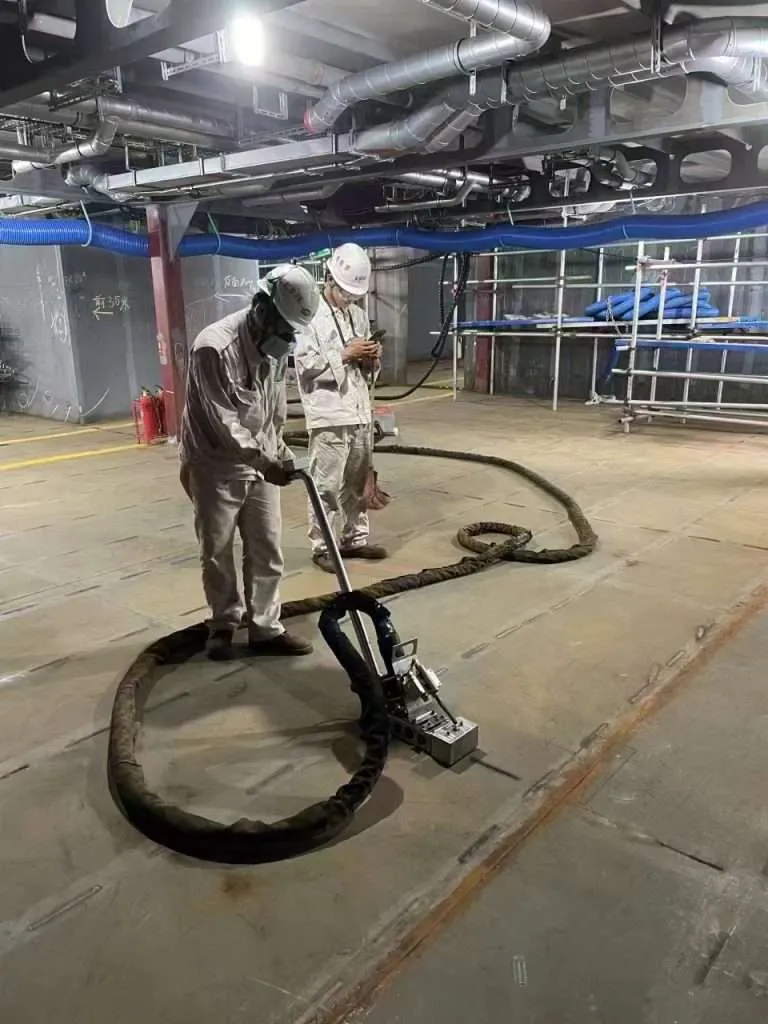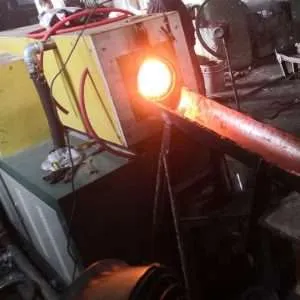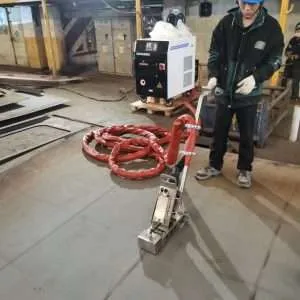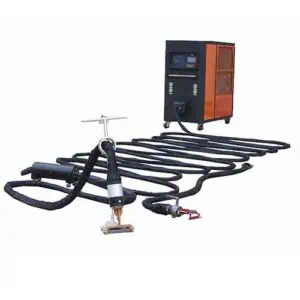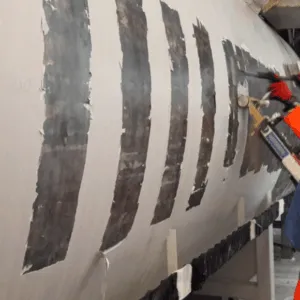-
1/5
-
2/5
-
3/5
-
4/5
Induction Straightening and Alignment of Frames and Support Structures in Heavy Machinery
Induction Straightening and Alignment of Frames and Support Structures in Heavy Machinery
In the demanding world of heavy machinery manufacturing and maintenance, the structural integrity of frames and support components is paramount. When these critical elements become misaligned or distorted due to manufacturing processes, operational stress, or accidental damage, precision restoration becomes essential. Induction straightening technology has emerged as a revolutionary solution that combines efficiency with exceptional precision. This advanced technique utilizes electromagnetic principles to restore dimensional accuracy to even the most substantial metal components while preserving their mechanical properties.
Induction straightening heating machines represent a significant advancement in metal straightening technology, particularly for marine, industrial, and structural applications. These systems utilize electromagnetic induction to generate precise, localized heat in metal components, facilitating controlled deformation and straightening without the drawbacks of traditional flame-based methods. This article examines the technical parameters, operational benefits, and performance analysis of modern induction straightening systems with particular focus on deck and bulkhead applications.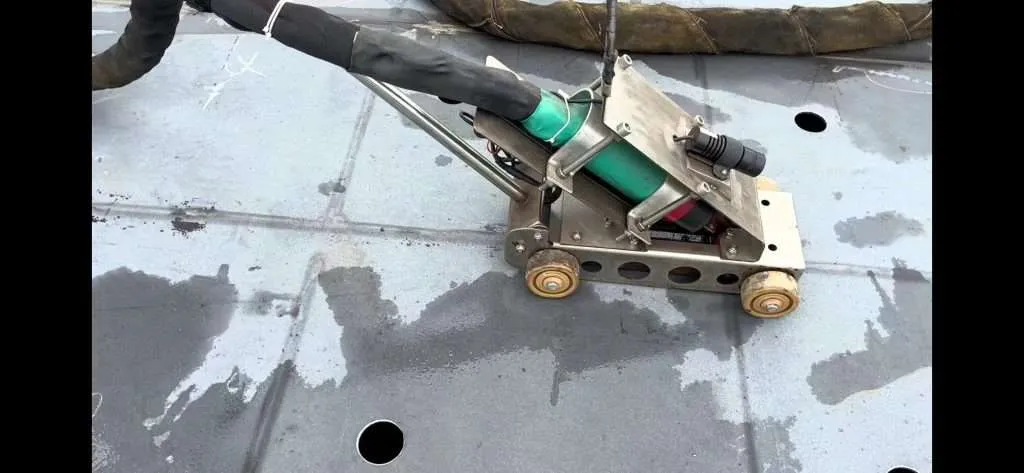
Working Principle of Induction Straightening
Induction straightening operates on the principle of electromagnetic induction, where alternating current passing through an induction coil generates a rapidly changing magnetic field. When a conductive workpiece is placed within this field, eddy currents are induced within the material, creating resistive heating. This process allows for:
- Precise control of heating depth and pattern
- Rapid temperature increase in targeted areas
- Minimal heat affected zone (HAZ)
- Reduced material distortion compared to flame heating
Why Is Alignment Vital in Heavy Machinery?
Proper alignment of frames and support structures is vital for several reasons:
- Structural Integrity: Misaligned structures are prone to stress concentration, which can lead to cracks, fatigue, or failure over time.
- Operational Efficiency: Misaligned machinery components consume more energy, cause unnecessary vibrations, and can lead to inconsistent or reduced performance.
- Safety: Machinery failure caused by misalignment can endanger personnel and lead to costly downtime or repairs.
- Longevity: Alignment issues, if left unchecked, accelerate wear and tear on parts, reducing the life cycle of the equipment.
With these factors in mind, correcting deformation quickly and accurately is crucial, making induction straightening an excellent choice.
How Induction Straightening Works for Heavy Machinery Frames and Support Structures
Induction straightening is a meticulous process, specifically suited for the heavy-duty materials and metal structures used in heavy machinery. Below, we break down the process step by step:
1.Assessment and Preparation
Before starting the straightening process, the misaligned or deformed sections of the frame or support structure are carefully inspected. This includes measuring deviations, identifying load-bearing zones, and developing a precise heat-application plan. This stage ensures that only the affected area is treated, minimizing the impact on surrounding material.
2.Setting Up Induction Coils
Specialized induction coils are positioned over the targeted areas. The coil’s design and placement are selected based on the structure’s geometry and material properties to ensure precision. Induction systems are highly flexible, allowing for tailored heating profiles.
3.Controlled Heating
When the induction system is activated, an electromagnetic field generates localized heat in the metal without physical contact. The temperature and duration of heating are tightly controlled to avoid overheating or damaging the material. This precision ensures that the surrounding material remains unaffected.
4.Realignment and Cooling
While the heated metal temporarily expands, careful adjustments are made to align the frame or structure into its correct position. As the material cools, it contracts, locking the structure into place. Natural or forced cooling methods can be used, depending on the application.
5.Testing and Validation
After the straightening process, alignment is verified using precision tools or scanning technology. Quality control checks ensure that the straightened structure meets alignment standards before the machinery is recommissioned.
Benefits of Induction Straightening for Heavy Machinery
Induction straightening offers numerous advantages, making it a preferred choice for heavy machinery applications:
1.Exceptional Precision
Induction straightening provides targeted heating, ensuring that only the required sections are treated. This minimizes deformation risk in adjacent areas and maintains the structural properties of the material.
2.Time Efficiency
Compared to traditional flame-based or mechanical straightening methods, induction straightening is significantly faster. This reduces downtime for machinery, enabling quicker repairs and improved productivity.
3.Energy Efficiency
With energy efficiency ratings of up to 90%, induction technology outperforms conventional heating processes, making it both environmentally friendly and cost-effective.
4.Eco-Friendly Operation
Induction straightening produces no harmful emissions, flames, or residue. It’s a cleaner alternative, aligning with modern sustainability goals in industrial operations.
5.Enhanced Safety
By eliminating the need for open flames or mechanical force, induction heating minimizes worker exposure to hazards like fire, fumes, or flying debris.
6.Adaptability to Complex Structures
The method’s non-contact nature enables its use on intricate shapes and designs, making it ideal for the complex geometries encountered in heavy machinery frames and support systems.
Applications of Induction Straightening in Heavy Machinery
Induction straightening is versatile and finds applications across various sectors that rely on heavy machinery. Some common use cases include:
- Construction Equipment: Frames and booms of cranes, excavators, and bulldozers often undergo deformation under load. Induction straightening restores their alignment.
- Mining Machinery: Misaligned support structures in mining loaders, haulers, and drills benefit from the precision of induction technology.
- Maritime and Offshore Equipment: Ship engines, bulkheads, and cranes on marine vessels often require straightening to maintain operational functionality.
- Industrial Presses and Tools: Large presses and stamping equipment need perfectly aligned frames and supports for precision manufacturing.
Technical Parameters of Industrial Induction Straightening Systems
The following table presents typical technical specifications for industrial-grade induction straightening machines designed for deck and bulkhead applications:
| Parameter | Small System | Medium System | Large System |
|---|---|---|---|
| Power Output | 25-50 kW | 50-100 kW | 100-300 kW |
| Frequency Range | 5-15 kHz | 2-8 kHz | 0.5-5 kHz |
| Heating Capacity (steel) | Up to 15 mm thick | Up to 30 mm thick | Up to 60 mm thick |
| Temperature Range | 200-800°C | 200-950°C | 200-1100°C |
| Cooling System | Water-cooled, 10-15 L/min | Water-cooled, 20-40 L/min | Water-cooled, 40-80 L/min |
| Coil Design | Flat pancake/custom | Flat pancake/custom | Specialized heavy-duty |
| Control System | PLC with basic logging | PLC with data monitoring | Advanced digital control with analytics |
| Power Supply | 380-480V, 3-phase | 380-480V, 3-phase | 380-480V, 3-phase |
| Mobility | Portable/cart mounted | Semi-portable/wheeled | Fixed installation/crane assisted |
| Heating Speed | 200-400°C/min | 300-600°C/min | 400-800°C/min |
Application-Specific Performance Data
Induction straightening heating machines are extensively used in various industries for applications that involve correcting deformations, stresses, or misalignments in metal structures. Key applications include:
- Shipbuilding and Repair:
- Deck Straightening: Removing deformations caused by welding-induced stresses on ship decks.
- Bulkhead Straightening: Aligning and correcting bulkheads for large-scale shipbuilding and repair projects.
- Structural Stress Removal:
- Reducing residual stresses in heavy steel structures in marine, industrial, and construction sectors to ensure structural integrity and prevent future deformations.
- Steel Plate and Thick Workpiece Straightening:
- Correcting warping, bending, or misalignment of thick steel plates or large workpieces often used in heavy industries like shipbuilding, construction, and manufacturing.
- Industrial Fabrication and Repairs:
- Fixing distortions on metallic components in fabrication processes caused by intense heat and welding.
- Precision Applications:
The following table presents performance data specific to shipbuilding and structural steel applications:
| Application | Material Thickness (mm) | Power Setting (kW) | Heating Time (sec) | Max Temp (°C) | Straightening Efficiency (%) |
|---|---|---|---|---|---|
| Deck Plate | 8 | 40 | 45-60 | 650 | 92 |
| Deck Plate | 12 | 60 | 70-90 | 700 | 90 |
| Deck Plate | 20 | 100 | 120-150 | 750 | 88 |
| Bulkhead | 10 | 50 | 60-75 | 680 | 91 |
| Bulkhead | 15 | 80 | 90-110 | 720 | 89 |
| Bulkhead | 25 | 160 | 180-210 | 780 | 86 |
| Frame/Stiffener | 6 | 30 | 30-45 | 600 | 94 |
| Frame/Stiffener | 10 | 55 | 50-70 | 650 | 92 |
Data Analysis and Performance Metrics
Energy Efficiency Comparison
Analysis of operational data reveals significant efficiency advantages of induction straightening over traditional methods:
| Method | Energy Consumption (kWh/m²) | Heating Time (min/m²) | CO₂ Emissions (kg/m²) | HAZ Width (mm) |
|---|---|---|---|---|
| Induction Heating | 2.4-3.8 | 1.5-2.5 | 1.2-1.9 | 30-50 |
| Gas Flame | 5.6-8.2 | 3.5-5.0 | 3.2-4.6 | 80-120 |
| Resistance Heating | 3.8-5.5 | 2.8-4.0 | 1.9-2.8 | 60-90 |
Quality and Precision Metrics
Comparative analysis of 500 straightening operations across three shipyards yielded the following quality metrics:
| Quality Metric | Induction Method | Traditional Methods |
|---|---|---|
| Dimensional Accuracy (mm deviation) | 0.8-1.2 | 2.0-3.5 |
| Surface Oxidation (scale thickness μm) | 5-15 | 30-60 |
| Microstructure Alteration (depth mm) | 0.5-1.0 | 1.5-3.0 |
| Rework Rate (%) | 4.2 | 12.8 |
| Process Repeatability (σ) | 0.12 | 0.38 |
Advanced System Configurations
Modern induction straightening systems incorporate several advanced features:
Control Systems and Monitoring
| Feature | Capability | Benefit |
|---|---|---|
| Temperature Monitoring | Real-time infrared measurement | Prevents overheating |
| Pattern Recognition | AI-based deformation analysis | Optimizes heating pattern |
| Data Logging | Records all heating parameters | Quality assurance and traceability |
| Predictive Modeling | Calculates optimal heating patterns | Reduces operator dependency |
| Remote Monitoring | IoT-enabled system monitoring | Enables expert remote assistance |
Coil Configurations for Different Applications
| Coil Type | Design | Best Application |
|---|---|---|
| Flat Pancake | Circular flat coil | Large flat surfaces |
| Longitudinal | Extended rectangular coil | Long stiffeners and beams |
| Contoured | Custom-shaped to match surface | Complex curved surfaces |
| Scanning | Movable smaller coil | Progressive straightening of large areas |
| Multi-zone | Multiple independently controlled sections | Complex distortion patterns |
Case Study: Shipyard Implementation
A major European shipyard implemented an advanced induction straightening system for deck and bulkhead processing with the following results:
- 68% reduction in straightening time compared to flame heating
- 42% reduction in energy consumption
- 78% reduction in rework requirements
- 55% reduction in labor hours per straightening operation
- 91% decrease in rejected components due to overheating

Operational Parameters and Material Considerations
The following table outlines optimal operational parameters for different steel grades commonly used in marine and structural applications:
| Steel Grade | Optimal Temp Range (°C) | Power Density (kW/cm²) | Heating Rate (°C/sec) | Cooling Method |
|---|---|---|---|---|
| Mild Steel (A36) | 600-750 | 0.8-1.2 | 8-12 | Natural air |
| High-Strength (AH36) | 550-700 | 0.7-1.0 | 7-10 | Natural air |
| Super High-Strength | 500-650 | 0.5-0.8 | 5-8 | Controlled cooling |
| Stainless Steel | 500-600 | 0.6-0.9 | 6-9 | Natural air |
| Aluminum Alloys | 200-350 | 0.3-0.5 | 4-6 | Forced air |
Conclusion
Induction straightening heating machines represent a significant technological advancement in metal forming and correction processes. The data analysis presented demonstrates clear advantages in terms of precision, energy efficiency, material quality preservation, and operational productivity. As shipbuilding and structural fabrication industries continue to seek more efficient and environmentally friendly processes, induction heating technology offers a proven solution that delivers measurable improvements across multiple performance metrics.
Induction straightening has revolutionized the alignment process for frames and support structures in heavy machinery. By combining precision, efficiency, and sustainability, it addresses key operational challenges while contributing to greener industrial practices. As industries move toward more complex and heavier equipment, technologies like induction straightening will play an increasingly important role in maintaining functionality, reducing downtime, and promoting environmental responsibility.
When considering maintenance and repair strategies for your heavy machinery, ensure that induction straightening is on your list. By investing in this advanced technology, you can optimize efficiency, improve safety, and align with modern sustainability objectives.




